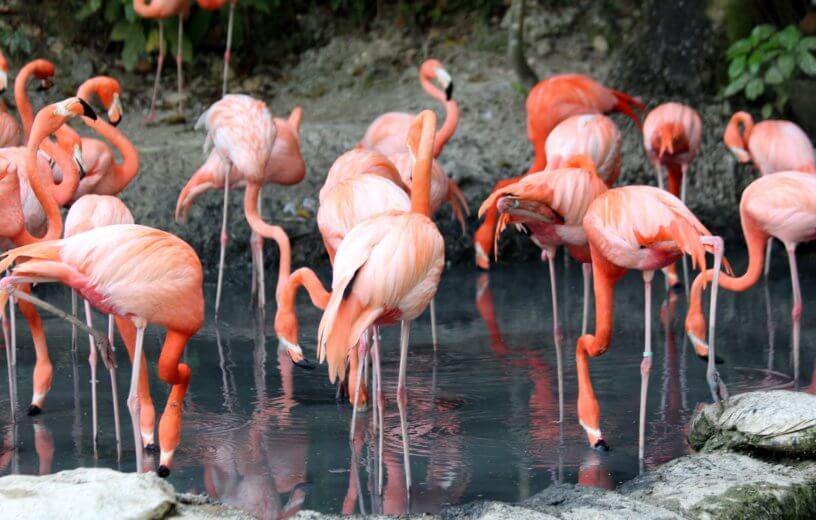EXETER, England — Birds of a feather really do flock together, at least for some species. A study by University of Exeter biologists found that flamingos form friendships that last for years.
Over a period of five years, the researchers showed that even though flamingos belong to highly social flocks, they also spend alone time with a few close friends. They also avoid some of their peers that they don’t get along with.
For the study, the authors examined four different flamingo species at the WWT Slimbridge Wetland Centre in Gloucester, England. They found several common flamingo social bonds, including sexually active, monogamous “married” couples, same-sex platonic relationships, and groups of three or four close friends.
“Our results indicate that flamingo societies are complex. They are formed of long-standing friendships rather than loose, random connections,” said study author Dr. Paul Rose, of the University of Exeter, in a media release. “Flamingos don’t simply find a mate and spend their time with that individual. Some mating couples spend much of their time together, but lots of other social bonds also exist. We see pairs of males or females choosing to ‘hang out’, we see trios and quartets that are regularly together.”
Dr. Rose adds that flamingos live long lives, and that some of the birds in the study have lived at Slimbridge since the 1960s. He said that the fact that flamingos form such long-lasting relationships with each other suggests these relationships are important for survival.
The research could be helpful for captive flamingo management in the future.
“When moving birds from one zoo to another, we should be careful not to separate flamingos that are closely bonded to each other,” says Rose.
The study utilized data from 2012 to 2016 and examined Caribbean, Chilean, Andean, and Lesser flamingo flocks. Each flock was between 20 and 140 birds. The findings suggest that larger flocks had the highest levels of social interaction.
“The simple lesson of this is that captive flamingo flocks should contain as many birds as reasonably possible,” Dr. Rose said.
The study also showed that social interactions and bonding was greatly influenced by season and time of year. More bonds formed in the spring and summer, or the breeding season.
Three out of four flocks were examined for the condition of the birds themselves, measured by the health of their feet, to examine the links between their social lives and their health. Apparently, flamingos continue to socialize and form lasting bonds even if their health is not optimum.
The study was published in the journal Behavioral Processes.
Like studies? Follow us on Facebook!
